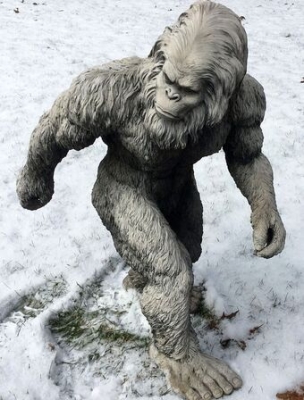
On 29 April of this year, the Indian Army tweeted pictures of large footprints in the snow of the upper reaches of the Himalayas. This started of the old debate. Are there Yetis – the abominable snowmen in the Himalayan ranges? There has been no evidence of Yetis roaming in the mountains. The footprints photographed so far have been proved to be those of large bears. But we humans like stories of fantasy. We loved reading about the Yeti rescuing and protecting Tintin. And we all believe that one day these creatures of our minds will turn out to be real.
What are these “legendary creatures that we hope to see one day?
The Abominable Snowmen
It is a man-like beast that has been mentioned in Buddhist stories. The Lepchas (a Himalayan tribe) recognised a supernatural “Glacier Being” as one of their hunting gods and the ruler of all the forests’ creatures. Yeti is a recent version of this goal. The word comes from a Sherpa word, “yeh-the” meaning “small, man-like animal” or meti meaning “bear.” The sherpas depicted it as a man-like figure that left large tracks of its feet in the snow. They probably wanted the creature to be scary because they wanted to protect the children from wandering into the unknown areas around. It is something like the “Poochandi” that parents talk of it get children to obey.
Why is the snowman “Abominable”? There is an interesting story behind it. In 1921, a reporter interviewed explorers returning from the British Mount Everest Reconnaissance Expedition. The mountaineers said they had probably belonged to Metoh-Kangmi. Kangmi translates to “Snowman” and Metoh to “Man-Bear”. The writer interpreted the word “metoh” as “filthy.” He thought it would not be right to call the snowman “filthy” so changed it to “abominable” in his report. The name stuck.
Bigfoot
Bigfoot is a creature that was originally called Sasquatch. This is imagined to be a large, shaggy primate. It is supposed to walk upright like a man. Yeti belongs to Asia, Bigfoot is thought to be native to North America, specifically to be Pacific Northwest. Tales of ape-like wild men roaming in the region were told by tribal communities. “Sasquatch” is derived from sesquac, a Halkomelem word meaning “wild man”. The name “Bigfoot” is a 20th century word for the creature.
Who coined the word “Bigfoot”? Again a reporter. In 1958, a man noticed large, unidentifiable footprints near his bulldozer in Bluff Creek, California. He made a cast of the prints and showed it around. A reporter of a local newspaper wrote a story about this. People read the story and began referring to the unknown owner of the massive tracks as “Big Foot.” The writer of the article spelled it “Bigfoot,” and the name stuck. “Bigfoot” became part of the English dictionary.
Leshy
Leshy is a mythical European creature that is said to wander across the woods looking for young women to kidnap. Leshy is thought of as a forest spirit that looks very much like a human being, with pale white skin and bright green eyes. How do you distinguish it from others you know with pale skin and green eyes? You can because Leshy has no eyebrows, eyelashes and right ear.
Aswang
In the Philippines, the “abominable” creature is called Aswang. It is portrayed as a cross between a werewolf and a vampire. The word “Aswang” comes from the Sanskrit “asura,” meaning “demon.”
Yowie
Yowie is Australian’s answer to the Sasquatch. Of all the bigfoot-like cryptids (imaginary creatures), the Yowie is at the top for aggression. In the tales about it, it is described as a demon that tears off the head of small creatures like a dog or kangaroo. Yes, they do attack humans as well. Be armed when you wander in the outbacks of Australia, in the warning against the Yowie.
Mapinguari
Brazil in south America is the home of Mapinguari. It is a sloth-like humanoid. Some reports say the Mapinguari has a large mouth in the middle of its stomach. That’s weird, right? And this creature is supposed to inhabit the Amazon forests.
Chupacabra
Chupacabra Spanish for “goat-sucker” – is a gargoyle. It is wolf-like in appearance. But go to Puerto Rico, people will tell you it walks on two feet. Its Mexican avatar is supposed to suck the blood of goats. But the Puerto Rican chupacabra relishes all the yard animals.
Picture Credit : Google

